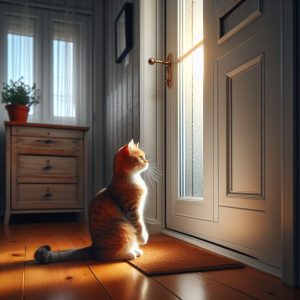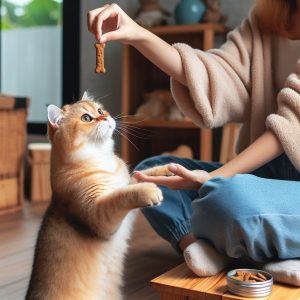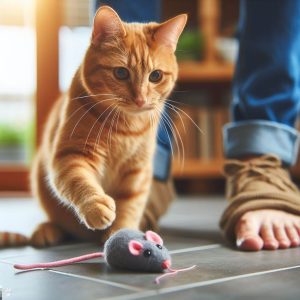Are you looking for an eco-friendly, cost-effective litter for your favorite furry companion? Pine pellets may be the solution you’ve been searching for.
But before you stock up on pine pellet litter, you probably have some questions. Are pine pellets actually safe for cats? How do they compare to traditional clay litter? Will the switch be an easy one or a challenging transition?
This comprehensive guide will give you the scoop on pine pellets for cat litter, including the pros and cons, proper setup, transition tips, and advice from vets and experienced cat owners. Let’s dig in!
An Introduction to Pine Pellet Cat Litter
Pine pellet litter is made from compressed sawdust or wood shavings. The pellets are created by squeezing out the moisture and compressing the pine material under high pressure. This makes the pellets extremely absorbent.
When liquid is absorbed, the pellets begin to break down into pine sawdust, which helps contain odors. The pellets themselves are typically completely fragrance-free.
Compared to traditional clay litter, pine pellets are an affordable and eco-friendly alternative. Since they’re made from a renewable wood source, pine pellets are sustainable and biodegradable. Clay litter is strip-mined, which harms the environment.
Pine pellets also tend to produce less dust and tracking around the home. And once soaked through, the sawdust can be safely flushed or composted. No more hassling with heavy clay litter bags!
Now let’s tackle the question on every cat owner’s mind: Are these pine-based pellets safe for your feline friends?
Are Pine Pellets Safe for Cats? Examining the Potential Risks
When considering any new product for your precious cats, safety is the number one priority. So let’s take a close look at whether pine pellets pose any risks.
The main safety concerns with pine pellets include:
- Respiratory irritation – Softwoods like pine contain phenols that can irritate a cat’s respiratory tract. Signs include sneezing, coughing, and watery eyes.
- Skin inflammation – Phenols may also cause skin irritation or inflammation around a cat’s paws and body. Watch for licking, scratching, redness, and sores.
- Ingestion issues – Eating pine pellet litter could potentially cause gastrointestinal upset or blockages. Monitor your cat closely during the transition.
However, these risks primarily exist when using pine pellets containing natural phenols, oils, and resins. High-quality kiln-dried pine pellets that undergo extreme heat treatment are far less likely to cause adverse reactions.
Kiln-Dried Pellets Are the Safer Option
The kiln-drying process removes the volatile phenols, oils, and sap that could irritate your cat. Temperatures reach over 200°F, which essentially bakes the components out of the wood.
This makes kiln-dried pine pellets a very safe option for feline litter according to most veterinarians and experts. But do still go with your gut. If you have any concerns, consult your vet before making the switch.
When shopping, inspect the label closely and look for words like “kiln-dried,” “heat-treated,” or “high temperature dried” to ensure safety.
Avoid pine pellets made from cedar, which contains more natural phenols. Stick with pellets made from softer woods like pine that are safer once kiln-dried.
Pro Tips for Transitioning Cats to Pine Litter
Switching litter can be tricky with finicky felines. Take it slow and make the transition gradually to get your cat used to pine pellet litter.
1. Mix In Pine Pellets Over 2-4 Weeks
For the first week, fill the litter box with 25% pine pellets and the rest with your current litter. Slowly increase the ratio of pellets each week until you reach 100%. This gradual process allows your cat time to adjust.
2. Use a Large, Open Scoop
Invest in a sturdy scoop with large holes that can effectively sift out the sawdust and leave the pellets behind each time you clean the litter box.
3. Start With a Thin Layer of Pellets
Begin with just a thin layer of 1-2 inches of pine pellets. As your cat gets used to them, slowly increase the depth to 2-3 inches. This prevents them from rejecting the new litter.
4. Give it Time
It can take cats 2-4 weeks to fully transition to new litter. Be patient and allow your feline to adjust at their own pace. Expect some missed attempts or accidents at first.
5. Make Litter Box Comfy
Use a large, open litter box that allows cats to dig and cover waste comfortably. Some cats dislike the feeling of pellets under their paws at first. Give them space.
6. Monitor Health Closely
Watch for any signs of respiratory issues, skin irritation, or digestion problems, and discontinue use if these occur. Health and safety comes first.
Take the switch slowly and let your cat warm up to the new pine pellet litter. With time, patience, and positive reinforcement, you can make the transition smoother and less stressful.
The Pros and Cons of Pine Cat Litter
Before you commit to the switch, let’s weigh the notable advantages and potential drawbacks of pine pellet cat litter:
The Pros
- Ultra-absorbent – Made from compressed pine, the pellets soak up liquid and odor effectively.
- Less tracking – Pine pellets are heavier than clay and don’t stick to paws as much. Less mess around the home.
- Good for odor control – Pine neutralizes ammonia smells from cat urine as it breaks down.
- Dust-free – No dust clouds when you scoop. Great for cats and owners with respiratory issues.
- Affordable – Pine pellets cost a fraction compared to premium clay litter. Great for multi-cat homes.
- Eco-friendly – Sustainable, renewable pine is more earth-friendly than strip-mined clay. Fully biodegradable too.
- Natural material – For owners who want a chemical-free, non-synthetic litter.
The Cons
- Transition time – It takes most cats 2-4 weeks to get fully accustomed to pine pellets.
- Messy at first – Expect some tracked litter and spills as your cat gets used to digging in pellets.
- Can stain – Pine sawdust stains easily. Place mats under the litter box to protect floors.
- May track more – When soaked, heavier sawdust pieces may stick to paws more than clay litter.
- Not for all cats – Some felines dislike the texture and simply refuse to use pine litter.
While extremely cost-effective and earth-friendly, pine litter has some downsides to consider before making the switch. Assess your cat’s personality and be ready to take potty training slow.
Expert Tips to Make the Transition Seamless
Here are some tried-and-true tips from vets and experienced cat owners for introducing pine pellet litter smoothly:
- “Mix it up very gradually over 2-4 weeks so your cat can adjust to the new smell and texture.” – Dr. Sarah Goldstein, DVM
- “I prefer kiln-dried pine because it’s safer. And get an open scoop that won’t crush the pellets yet lets sawdust fall through.” – Martha Stewart
- “Start with just an inch or two of pellets at first. Slowly add more depth as your cat gets used to digging and covering.” – Jackson Galaxy
- “Use a liner or mat under the litter box at first. There may be some tracking as your cat learns.” – Elle D., cat owner
- “Have lots of patience and be willing to take a step back if your cat is stressed. Taking it slow is key.” – Benjamin O., cat owner
- “Try different styles of boxes and litter depths. Find what makes your cat the most comfortable.” – Katherine H., cat owner
- “Stay positive! Celebrate little victories like when your cat first digs in or uses the pine pellets.” – Hannah F., cat owner
The most crucial tips are to transition gradually, be patient, use kiln-dried pellets, and opt for an open, scoopable style of litter box.
Final Verdict: Are Pine Pellets a Safe, Smart Choice?
So what’s the final verdict according to vets and experienced cat owners? When sourced and used properly, kiln-dried pine pellets are considered safe and effective litter for most felines.
However, not all cats take to them. Gauge your individual cat’s response during the transition period and don’t force the issue. If they just refuse to use pine litter, even after a slow transition, don’t stress – just switch back to a litter they prefer.
Assuming your cat adapts well, pine pellets offer an affordable, eco-friendly litter option that helps control odor and mess. Just be ready to put in some time and patience during the adjustment phase. And as always, monitor your cat closely and discontinue use if any adverse reactions occur.
The Key Takeaways on Pine Pellets for Cat Litter:
- Kiln-dried pine pellets are safer than those with natural phenols and oils. Inspect the label closely.
- Make the switch gradually over 2-4 weeks to ease the transition.
- Use a scoop with large holes to sift out sawdust easily.
- Start with a thin layer of just 1-2 inches of pellets at first.
- Allow your cat time to adjust. Have realistic expectations.
- Celebrate small wins and stay positive throughout the transition period.
- Monitor your cat’s health and discontinue use if any irritation occurs.
- Not all cats will take to pine litter. Be willing to switch back if needed.
With the right prep and patience, pine pellet litter can be an economical and low-waste option for your feline friend. Make the transition stress-free by following these expert tips. And as always, put your cat’s comfort first.



